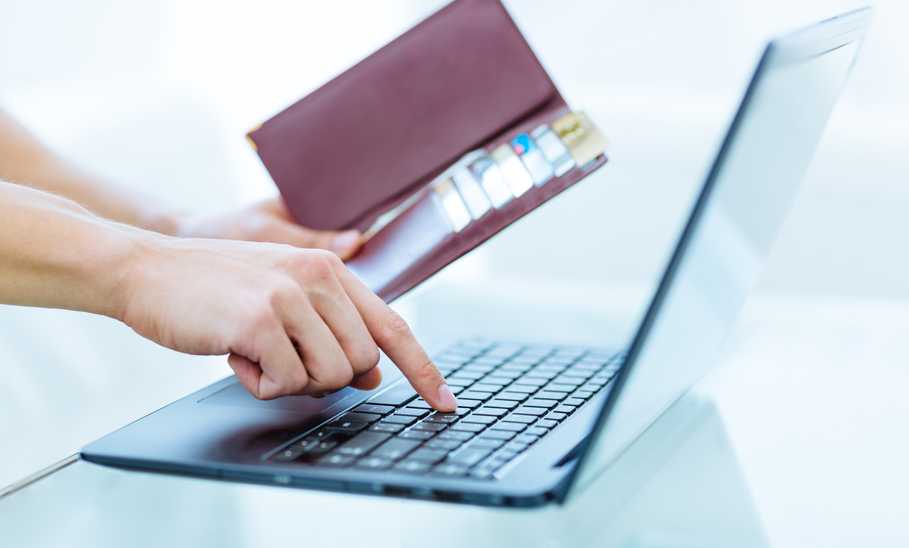How To Open A Bank Account Online: 6 Easy Steps

Our evaluations and opinions are not influenced by our advertising relationships, but we may earn a commission from our partners’ links. This content is created by TIME Stamped, under TIME’s direction and produced in accordance with TIME’s editorial guidelines and overseen by TIME’s editorial staff. Learn more about it.
Gone are the days of being required to visit a local bank branch to open a new account. With the rise of mobile apps, web platforms, and online-only banks, it’s now easier and faster than ever to open a bank account online without leaving home.
Here’s a guide to opening an account online, what you’ll need to have on hand, and how long you can expect the process to take.
The requirements for opening a bank account online may vary by financial institution and even from one account type to the next. However, no matter which account you open or where, there is some general information you can expect to provide and you should have this ready.
Your bank will need to know who it’s allowing to open and manage an account at that institution, which means verifying your identity. At the very least, this means asking for your name and date of birth, but it could also mean getting your Social Security number.
Some financial institutions will run a credit check as part of the new account process, though this happens most often with brokerages.
Your new bank needs to know how to contact you about your account, where to send statements, and even where you live so you can receive any 1099-INTs at the end of the tax year. For these reasons you should expect to provide your phone number, email address, and mailing address.
If you open an account that doesn’t have a minimum opening deposit or minimum balance requirement, you may not need to fund it right away. Instead, you could make a mobile deposit with a check or visit a local branch with cash.
If your account requires an initial deposit, though—or if you want to go ahead and start funding the account online—you’ll need information from whatever other account you’re using as a funding source. This could be another checking account, savings account, or money market account. For this, you’ll need your funding account’s routing and account numbers, as well as information about the other bank.
Now that you know what you need, it’s time to find and open the right account for you.
The first thing you’ll want to do before opening a new bank account online is shop around a bit. Not all accounts will meet your needs and not all will be right for you, so spend some time comparing your options.
Do you need an account with local brick-and-mortar branch locations, or are you all right with an online bank? Are features like mobile check deposit, peer-to-peer transfers, or early paycheck access important to you? Do you want an account that offers rewards, cash back on purchases, or even an above-average APY on the balance held?
Figure out your priorities and look for banks that offer accounts with those features.
Once you’ve found the right account, you’ll want to ensure that the financial institution will let you completely open your new account online if that’s something you hope to accomplish. Some banks will let you begin the process online, but then you’ll need to visit a local branch to complete everything. If you don’t want to go into a bank—or don’t have a branch nearby—this probably isn’t the institution for you. A growing number of banks—including Axos, Quontic, and Revolut—are digital only: They do not have physical locations, so your only option for opening an account is to do it online.
You may be asked to enter your ZIP code before choosing your banking product. That’s because some accounts and features may be regional, so the bank will want to ensure that you’re only offered eligible account types.
Before beginning the application process, you may be asked to choose the type of account you want to open. You’ll generally be asked different questions depending on whether you’re looking for a checking account, savings account, money market account, and so on.
Some banks, such as Discover, will make you create an online login before you can open a new account. This may be as simple as providing your email address, name, phone number, and a password that you choose. Some banks, such as Chase, ask for a valid form of identification such as a government-issued photo ID, driver’s license, or passport with photo. Other banks may let you skip the login step and go straight into providing your account info.
The personal information required to open a new bank account typically includes:
Depending on the financial institution and type of account you open, you may also need to provide your Social Security number.
You’ll likely need to agree to some terms and disclosures provided by the financial institution. This may include information about:
These disclosures will be printable, and you can always request a copy from the financial institution at any time if you aren’t able to access them through an online portal.
Once your account is open, it’s time to add your initial deposit. Some banks ask you to fund the account right away (if a minimum opening deposit is required, for example), while others will allow you to fund it whenever you’re ready. You’ll typically be offered an opportunity to set up a funding method at the time you open the account.
You can typically fund your account via:
In some cases, you may even be able to fund a new bank account with a credit card cash advance, though this is generally a high-cost option.
If you prefer an ACH transfer, you can either initiate one from a connected account at the same financial institution, or provide your routing and account number for an external account. If you want to deposit a check or cash, you can either visit a local branch, utilize a network ATM, use the mobile deposit feature on the bank’s app, or mail in a check.
There are many banks that make it easy to open a new account online. It depends on what you need most from that account and how you want to open it.
For example, you can open a fee-free account through Chime in two minutes or less, with no minimum deposit or balance requirement. Discover Bank allows you to open a checking or savings account, or certificate of deposit (CD) online in mere minutes with relatively little personal information. You’ll earn above-average interest rates and rewards, and you don’t even need to fund your account right away.
The easiest bank account to open online is the one that offers all of the features you personally want, charges the lowest (or no) fees, and makes it simple to both open and fund the account without ever leaving home.
Whether you want a new checking or savings account, many financial institutions make it easier than ever to open and fund an account online. By providing some personal information and digitally signing disclosures, you can open an account in just minutes. Then, fund your account with an ACH or wire transfer, mobile check deposit, or in-person cash deposit, and you can begin enjoying all the features offered by your new account.
Whether you need to send money to family, pay someone for a purchase, or fund a new bank account with an existing account, there are a few ways to transfer money to another online account. You can transfer money online by utilizing an ACH transfer, initiating a wire transfer, or simply using a peer-to-peer platform like Zelle.
Your bank’s online platform or mobile app will usually make it easy for you to locate your account number and even your routing number. This may be located within your account summary and details or on your mobile app, or it may be included on a PDF version of your account’s monthly statement.
There are a few reasons you may not be able to open a bank account online. Generally, it’s either that the financial institution requires you to visit a branch location in person or because you are ineligible for the online process. If you’re unable to provide the necessary information to open your account online, don’t meet certain criteria, or cannot fund the account according to the bank’s requirements, you may be asked to visit a branch to complete the process. Some banks also require an in-person visit to finalize all new accounts.
Before you can close a bank account online or in person, you must make sure the account has either a positive balance or has been zeroed out. If your bank allows, closing the account may be as simple as submitting a request online. Some banks will ask you to submit your request in writing, which might mean visiting a local branch or submitting a form. If you have a balance in the account, your bank may offer you an option to transfer the value, make a withdrawal in person, or issue you a check for that amount.
The information presented here is created by TIME Stamped and overseen by TIME editorial staff. To learn more, see our About Us page.



